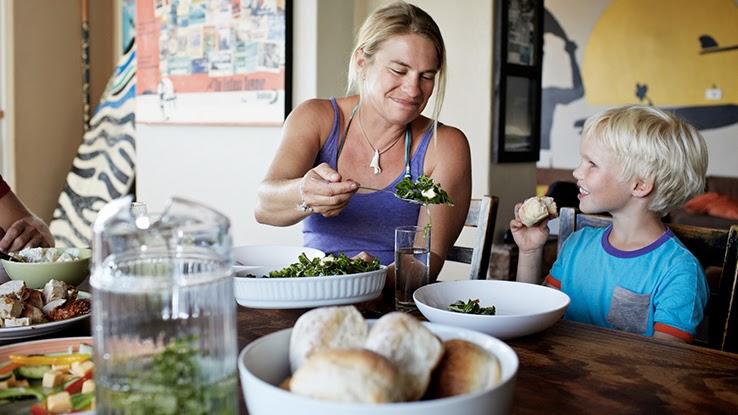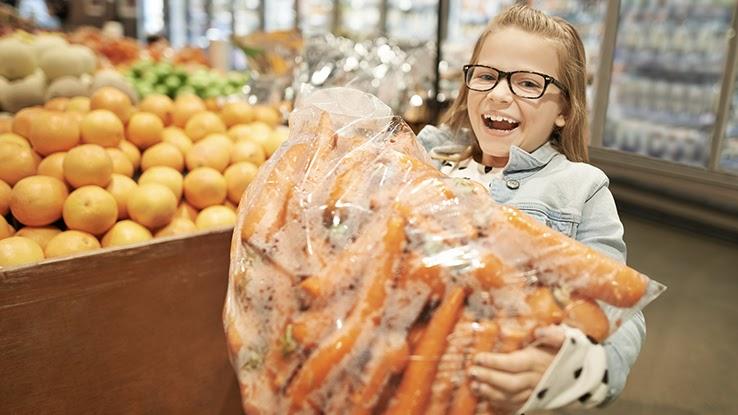Best Things To Eat On Weight Watchers Points Plus

Do you find yourself scoffing at organic produce prices or end up spending more than you wanted each time you head to the grocery store? It's true that processed convenience foods are often a lot more affordable than the nutritious options you'd like to add to your diet. But, your goal of eating healthier foods without breaking the bank is actually well within reach when you have the right strategy.
With some key planning steps and some smart new shopping habits, you'll be well on your way to better grocery budgeting — and more healthful meals. Follow these healthy budgeting and menu-planning tips to revamp your refrigerator and manage money at the same time.

If you don't have a food budget yet, it's helpful to make one. And if you do, it's time to rethink it. Your existing budget might be a bit too high for your liking — enough that it's interfering with other elements of your overall household spending limits. It might also be too low, which you've probably realized if you're exceeding it without getting all the basics you need. But to eat healthy on a budget, you'll need a budget. It's what defines your spending guidelines and helps you make sure you're still thriving financially.
Start by creating a realistic budget for yourself or your family. Take a look at what you spent on food over the past few months. This gives you a baseline amount to adjust up or down depending on your goals. You'll also want to determine what you're comfortable spending each month on food while still ensuring your other essential bills are covered. Take into account that, if you were ordering a lot of takeout before, you can bump up your grocery budget slightly to account for more home-cooked meals — just remember to cut back on your spending on takeout!
It's important to remember that your budget isn't set in stone. If you find that it's not enough to cover your purchases, you can always allocate more money. That's true for going over, too — you'll just need to determine where to cut back. There's always time to readjust.
Make a Menu Plan Each Week

If you come home after work starving with hungry kids, starting from scratch cooking a meal probably isn't the most pleasant prospect. This might be when you normally reach for the phone and order a pizza. Making a meal plan in advance is an effective way to balance your desire to eat healthier food — which is easier to do when it's homemade — and limit takeout costs at the same time. When you have fresh, healthy food on-hand or already prepared, there's no questioning what's for dinner. You know you already have a plan, and the evening just got easier.
To start, map out your week. Are there certain days when you're in more of a rush, maybe because of kids' sports practices or an online course you're taking? Check out your schedule and determine when dinner needs to be easiest. Then, see which recipes in your regular rotation — those tried-and-true classics your household loves — are easy to make. With a calendar handy, plan out which dish you'll serve each day of the week.
The key is to stick to easy and healthy options. If you don't love cooking, you don't have to overwhelm yourself with complicated recipes. Look online for easy 15- or 30-minute meals you can have on the table quickly — but be sure to choose options that aren't based on prepackaged, processed foods. A slow cooker also makes eating well easier. You can toss in some vegetables and a protein and set it to cook for the day. You'll have multiple meals from a few minutes of prep time.
Empty Your Pantry and Fridge Regularly

Each week, take stock of what you have on hand in your pantry and in your refrigerator. There are a couple great reasons to do so. This new habit can save you money in a few ways. For one thing, you'll be much less likely to let something perishable go bad simply because you forgot about it. If you come across produce that's about to turn or a package of chicken breasts you forgot you'd thawed out, you can plan to use them up early on in your weekly meal schedule.
In addition, you might find you already have something non-perishable on hand you can use as the basis for a meal. That means you won't need to go out and spend extra on it. That bag of quinoa you bought a few months back is still good — and it can become the star player in next Wednesday's protein bowls.
Consider Meal Prepping Ahead of Time

If you've spent any time on the health side of social media, you might've noticed that meal prepping is an important method people use for sticking to new diets. But it can actually help you stick to a budget, too. It's exactly what it sounds like — making meals for the future ahead of time. Many people portion out each meal in reusable containers, which can take time. But, meal prepping can also involve combining things you've made ahead with new ingredients each day.
Here's what it might look like. Let's say you make a large batch of wild rice that you store in the fridge. Then, you prepare a couple different proteins. You also keep a variety of vegetables on hand. You can cook some of these ahead of time in a sheet pan or just slice and chop them so they're ready to cook or add to a salad that day. Throughout the week, you can combine these basics in new ways — maybe a protein and salad one day and some wild rice with root vegetables for dinner. As an added bonus, this system makes it easier to prep lunch for work each day.
Consider easy foods for breakfast that you can grab and go after a little preparation, such as egg cups with spinach, red peppers and feta cheese that you pop in the microwave. You can also bake a tray of oatmeal or overnight oats to have on hand for the week. Keep in mind that having some variety here will help you avoid meal-prep burnout.
Be Strategic About Buying in Bulk

It might come as a surprise, but not all bulk shopping is actually saving you money. It's normal, especially when you're shopping at warehouse stores, to see appealing bulk items and have the best intentions about using them. But what happens if you don't like the item, or the amount is simply too much to eat before it goes bad?
As you get started with your new budgeting and meal-prepping habits, it's best to limit your bulk purchases to foods you already eat regularly. When it comes to buying produce in bulk, it's also a good idea to switch from fresh to frozen so you have more time to use up the items. Fresh ingredients aren't always cost-effective unless you're feeding a large group or you plan to cook them right away.
It's important to shop around and price check before you make a bulk purchase, too. The U.S. Department of Agriculture has created the free MyPlate app that you can use to price check different stores' items and compare costs. You can also discover healthy, budget-friendly recipes on MyPlate, so you'll be well on your way to success with saving money — and savoring healthful foods.
Resource Links:
"Healthy Eating on a Budget" via the U.S. Department of Agriculture
"10 Tips for Eating Healthy on a Budget" via the U.S. Department of Health & Human Services National Institute on Aging
"Eat Healthy on a Budget by Planning Ahead" via the American Heart Association
MORE FROM SYMPTOMFIND.COM
Best Things To Eat On Weight Watchers Points Plus
Source: https://www.symptomfind.com/health/tips-eat-healthy-budget?utm_content=params%3Ao%3D740013%26ad%3DdirN%26qo%3DserpIndex

0 Komentar